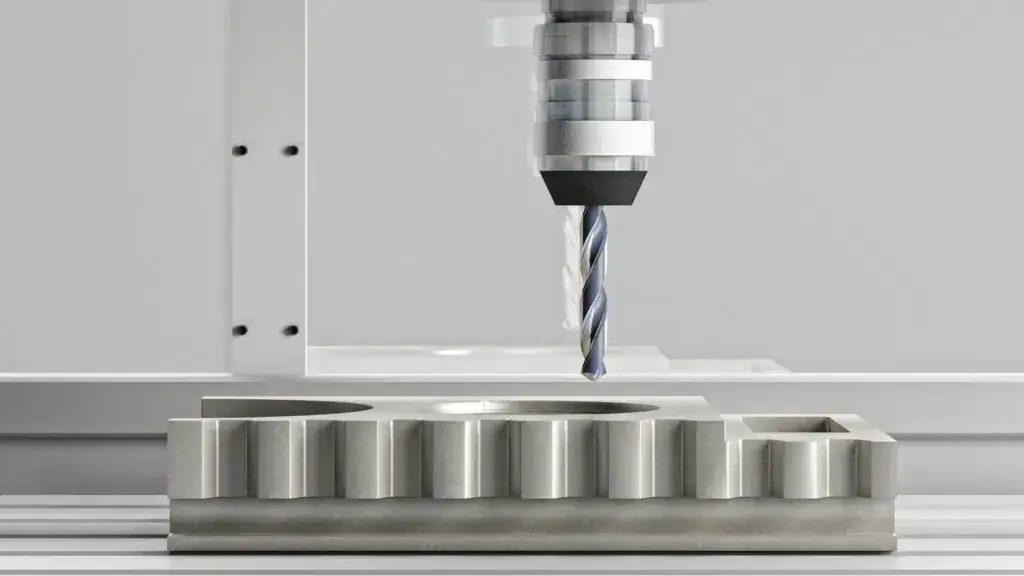CNC Machining Metal: Supported Materials, Considerations, and Applications
Metal CNC machining involves the use of computer-controlled machine tools to machine metal parts into finished products or components. And it is able to provide innovative machining solutions. Diamond machining technology knife sharpener cuts faster than any other abrasive of the same grit size. DMT diamond machining technology is the leader.
In this article, we will help you understand metal machining processes, technologies and how to maximize their performance.
1.What is CNC machining of metal?
CNC machining of metal is a complex manufacturing process in which a computer numerical control system directs the operation of tools, thereby shaping the metal workpiece.
The technology is able to produce metal parts with high precision and complex geometry, which is essential for industries such as aerospace, automotive, and medical devices that require complex components.
2.How does CNC machining of metal work?
The CNC machining process involves several key steps that transform digital designs into tangible, high-precision metal parts:
- Design preparation: Engineers use computer-aided design (CAD) software to create a detailed 3D model of the part to be produced.
- CAM processing: CAD files are typically converted into CNC machine programs using computer-aided manufacturing (CAM) software. This program converts the design into a language (G-code) that the CNC machine can interpret.
- Machine setup: The operator prepares the CNC machine by installing the correct tools and fixing the raw metal material in place.
- Machining: CNC machines execute program commands to precisely cut and shape metal according to design specifications.
- Post-processing: After machining, parts undergo finishing processes such as polishing or painting to achieve the desired surface finish and aesthetic quality.
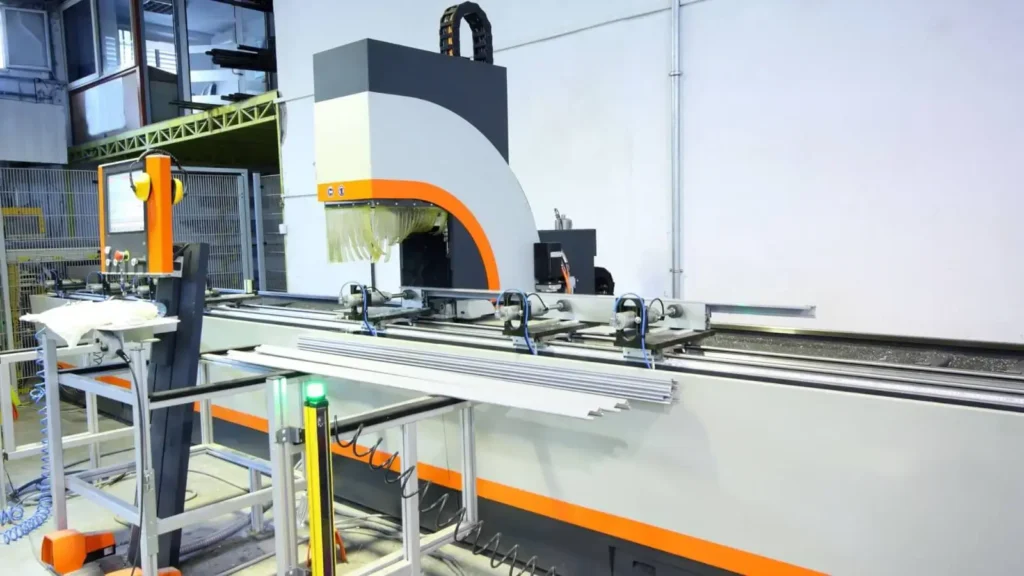
3.What are the different technologies used in CNC machining metal?
CNC machining metal integrates a variety of specialized technologies, each tailored to effectively shape and manufacture a variety of metal parts. Below, we will explore each technology and its key considerations, advantages, limitations, and typical applications.
1) Milling
Milling involves removing material from a workpiece using a rotating cutting tool.
① Advantages
- Ability to flexibly create complex shapes and fine details.
- High precision can be achieved through advanced CNC control.
- Applicable to a variety of materials, including metals, plastics, and composites.
② Limitations
- Relatively long setup time for complex parts.
- High cost of large-scale production due to the time required for each product.
- Scrap may be generated, especially in subtractive processes.
③Applicability
Suitable for fine and complex parts such as engine parts, molds and tools.
2) Turning
Turning uses a single-point cutting tool that moves linearly as the workpiece rotates.
①Advantages
- High production efficiency, especially for symmetrical parts.
- Lower cost per unit after scale-up.
- Excellent surface finish and precise control.
②Limitations
- Limited to rotationally symmetrical parts.
- The depth and complexity of the cut can be limited.
- High-quality tools are required to maintain accuracy.
③Applicability
Best for cylindrical parts such as rods, shafts and fasteners.
3) Drilling
Drilling uses a multi-point drill to drill holes in the material.
①Advantages
- Essential for most assembly processes that require bolting or fastening.
- Can be easily integrated with other machining operations.
- Efficient material removal rate.
②Limitations
- Hole depth and diameter may be limited by tool length and strength.
- Additional finishing operations are often required to improve accuracy.
- Chips and material fragments need to be managed effectively.
③ Applicability
Used extensively in almost every project involving mechanical assembly.
4) Boring
Boring uses a single-point cutting tool to refine the diameter of an existing hole.
① Advantages
- Improve hole diameter accuracy and surface smoothness.
- Allows precise adjustment of hole size.
- Can correct errors or misalignments from previous operations.
② Limitations
- Requires pre-existing holes, limiting its initial application.
- Typically slower and more specialized than drilling.
- Tool and setup costs can be expensive to achieve high accuracy.
③ Applicability
Used in critical applications where hole size must meet tight tolerances.
5) Broaching
Broaching uses a toothed tool to remove material in a continuous motion, ideal for unique contours.
① Advantages
- Produces a very smooth surface.
- Efficient production of keyways and splines.
- Capable of precision machining of hard materials.
②Limitations
- Custom broaches have a high initial cost.
- Not widely used – each brooch is designed for a specific shape.
- Careful setup and adjustment are required.
③Applicability
Best suited for mass production of internal gears, slots, or complex surface profiles.
6) Sawing
Sawing is often used to cut raw materials to the required size before machining.
①Advantages
- Quick and efficient separation of materials.
- Lower cost compared to other machining processes.
- Simple setup and operation.
②Limitations
- Limited accuracy, generally used for rough cutting.
- Material waste may occur on the cutting line.
- Noise and dust generation need to be managed.
③Applicability
Best suited for initial material shaping, especially in manufacturing and construction.
7) Grinding
Grinding uses grinding wheels to achieve high precision and surface quality.
①Advantages
- Excellent surface finish and dimensional accuracy.
- Suitable for hard materials such as ceramics and hardened steel.
- Very tight tolerances can be achieved.
② Limitations
- Slow removal speed; not suitable for large amounts of material.
- Severe tool wear will lead to increased costs.
- Requires superb skills and precise settings.
③ Applicability
Suitable for final finishing processes, especially tools and molds.
8) Tapping
Tapping involves cutting threads within pre-drilled holes to accommodate bolts or screws.
① Advantages
- Essential for parts that need to be assembled.
- High precision in thread production ensures a strong connection.
- Can be performed on a variety of materials.
② Limitations
- There is a risk of tap breakage if not managed properly.
- Accurate hole size is required before tapping.
- Limited by internal thread depth and size.
③ Applicability
Necessary for manufacturing parts that must be assembled with threads
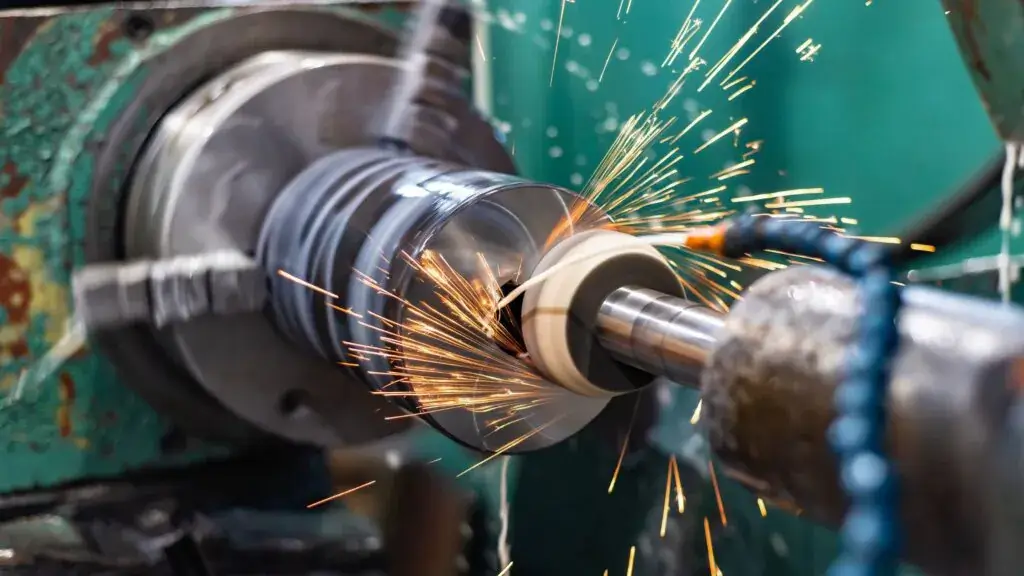
4.How to choose the right CNC machining metal method?
Choosing the right CNC machining method is very important to optimize the quality and efficiency of the manufacturing process. Below, you’ll find important factors to consider when choosing the best CNC technology for your specific metalworking tasks:
1) Material Compatibility
Different CNC machines have different efficiencies when processing various materials. For example, harder materials like stainless steel may require a sturdier, more precise machine, such as one with advanced milling capabilities.
2) Complexity of Part Design
The complexity of the part you intend to manufacture will influence your choice of machining process. Intricate designs with intricate details may require a 5-axis milling machine that can handle multiple angles and fine cuts.
3) Production Volume
The number of parts required also plays a role in choosing the right CNC machine. Large-volume orders may benefit from a powerful system that can run continuously with minimal downtime.
4) Tolerance and Precision Requirements
The precision required of the final part will influence the choice of CNC machining method. Certain industries, such as aerospace and medical, require extremely high tolerances.
5) Cost-Effectiveness
Overall cost is always an important factor in manufacturing. This includes not only the cost of the machine itself, but also the cost of operation and maintenance.
5.What Metals Can Be Effectively Machined with CNC?
CNC machining is versatile and capable of shaping a wide range of metals, each with unique properties that make them suitable for specific applications.
1) Aluminum
Aluminum is favored in CNC machining for its excellent machinability, light weight, and corrosion resistance, making it an ideal choice for a wide range of applications.
①6061
6061 is known for its versatility and good mechanical properties and is widely used in aerospace and automotive components. It combines strength and light weight with good corrosion resistance and weldability.
- Typical uses: automotive parts, aircraft structures, and yachts.
- Optimization tips: Use sharp tools and higher cutting speeds to prevent material from accumulating on the edge of the tool.
②7075
Due to its higher zinc content, this grade has significantly higher strength than 6061 and is suitable for highly stressed structural components.
- Typical uses: aerospace components, military applications, and bicycle frames.
- Optimization tips: Control cutting speeds and feed rates to control heat and avoid premature tool wear.
③2024
2024 has high strength and excellent fatigue resistance, mainly used in aerospace applications.
- Typical uses: aircraft fuselage structures and wing tension members.
- Optimization tips: Use high-quality surface treatments and coolants to control the material’s work hardening tendency.
2) Stainless steel
Stainless steel is selected for its strength, durability and corrosion resistance. It is more difficult to process than aluminum, but has significant advantages in harsh environments.
①304
The most common stainless steel, known for its excellent corrosion resistance and formability.
- Typical uses: food processing equipment, kitchen utensils and chemical containers.
- Optimization tips: Use lower speeds and heavy feeds to minimize work hardening and extend tool life.
②316
Corrosion resistance is better than 304, ideal for marine and medical applications.
- Typical uses: medical implants, marine environments and chemical processing equipment.
- Optimization tips: Make sure the tool is sharp and fully cooled to avoid sticking and obtain a good surface finish.
③303
Easier to machine than 304 and 316 due to the addition of sulfur, which acts as a chip breaker.
- Typical uses: fittings, screws, and gears.
- Optimization tips: Increase cutting speed to reduce the risk of tool sticking and improve the quality of the finished product.
3) Brass
Brass is an alloy of copper and zinc, known for its easy machining, corrosion resistance, and excellent conductivity. It is the material of choice for decorative items and parts requiring low friction.
①C360
This is “easy-to-cut” brass, the standard for excellent machinability among brasses.
- Features: high strength, corrosion resistance, and high surface finish.
- Applications: gears, valve bodies, screw components, and fittings.
- Machining tips: Use sharp cutting tools and moderate speeds to avoid work hardening.
②C330
Has good machinability and is often used in applications requiring piping.
- Features: Lower strength than C360, but good ductility and corrosion resistance.
- Applications: Pipes for furniture, railings and general hardware.
- Processing tips: Optimal speeds and feeds are slightly below C360 to extend tool life and maintain surface integrity.
4) Copper
Copper is highly regarded for its thermal and electrical conductivity, making it ideal for electrical components, heat exchangers and other applications where transferring heat or electricity is critical.
①C110
It is known as electrolytic tough pitch copper (ETP) and is the most common form of pure copper.
- Characteristics: Excellent conductivity, ductility and corrosion resistance.
- Applications: Wires, conductors and architectural features.
- Processing tips: High thermal conductivity requires careful management of processing temperatures by using appropriate coolants.
②C101
This is oxygen-free copper and is used where the highest conductivity is required.
- Characteristics: Extremely high purity with excellent conductivity and ductility.
- Applications: Semiconductor substrates and vacuum tubes, superconductor substrates.
- Processing tips: Maintain consistent feeds and speeds to prevent the material from deforming due to softness.
5) Titanium
Titanium is known for its strength-to-weight ratio, corrosion resistance, and biocompatibility, making it ideal for the aerospace, medical, and automotive industries.
① Grade 5 (Ti-6Al-4V)
This is the most commonly used titanium alloy, known for its excellent combination of strength, corrosion resistance, and weldability.
- Features: High strength, light weight, and corrosion resistance.
- Applications: Widely used in the aerospace industry, such as fuselage structures and turbine blades.
- Processing tips: Use low cutting speeds and high feed rates; coolant is essential to prevent overheating and tool wear.
② Grade 2
This grade is known for its excellent corrosion resistance and formability in its pure form.
- Features: High strength, good ductility, and strong corrosion resistance.
- Applications: Commonly used in chemical processing and marine environments.
- Processing tips: Sharp tools and proper cooling methods are essential to control its ductility and prevent work hardening.
6) Tool Steels
Tool steels are carbon and alloy steels known for their hardness and durability, used to make cutting and forming tools, molds and dies.
①A2
This is a widely used air-hardening tool steel with a good balance between hardness and toughness.
- Features: High heat treatment stability and good wear resistance.
- Applications: Suitable for stamping dies, shear blades and industrial knives.
- Processing Tips: Preheating is necessary before processing to avoid chipping; low speed and high feed will minimize the risk of cracking.
②D2
Known for its high wear resistance and ability to maintain a cutting edge.
- Features: Extremely high wear resistance and deformation resistance.
- Uses: Used to make stamping dies, woodworking tools and wear-resistant tool parts.
- Processing Tips: Due to its brittleness, it needs to be handled with care; high power and rigid devices should be used when processing to handle the hardness.
7) Nickel Alloys
Nickel alloys are known for their corrosion and heat resistance, making them ideal for harsh environments.
① Inconel 625
Inconel 625 is known for its strength and excellent corrosion resistance, even under extreme temperature conditions. This alloy is non-magnetic and has excellent fatigue strength and thermal stability.
- Features: It maintains its strength over a wide temperature range, making it ideal for high-temperature applications where aluminum and steel would succumb to creep. This property is critical for aerospace and marine engineering applications.
- Applications: Aerospace components, gas turbine blades, aircraft exhaust systems, and equipment used by the marine industry.
② Monel 400
Monel 400 is a nickel-copper alloy that is highly resistant to high-temperature seawater and steam, as well as salt and alkaline solutions.
- Features: Its corrosion resistance makes it the material of choice for marine applications and parts exposed to corrosive elements. The alloy is also easier to process than some other nickel alloys, allowing for the manufacture of very fine parts.
- Applications: Marine engineering, chemical and hydrocarbon processing equipment, valves, pumps, shafts, fittings, fasteners and heat exchangers.
8) Special alloys
Special alloys are used in challenging environments, including high temperatures and corrosive applications, due to their excellent properties.
① Hastelloy
Hastelloy alloy is known for its excellent chemical resistance, especially in reducing environments. It can withstand a variety of corrosive substances, including organic and inorganic acids.
- Characteristics: The alloy’s resistance to pitting and stress corrosion cracking makes it suitable for parts that must withstand high stress in corrosive environments, reducing the need for frequent replacement.
- Applications: Chemical processing equipment, pollution control, pulp and paper production, and waste treatment facilities.
② Zirconium
Zirconium has strong heat and corrosion resistance, especially in acidic environments. Zirconium also has strong ductility and is easy to process.
- Characteristics: Its excellent corrosion resistance and ability to withstand extreme temperatures make it an ideal choice for very specialized applications.
- Applications: Reactors in chemical processing, surgical instruments, and nuclear reactors.
9) Carbon Steel
Carbon steel is classified according to the concentration of carbon it contains, which affects its hardness, ductility, and tensile strength. Here is how different grades of carbon steel perform in CNC machining.
① Low Carbon (1018)
1018 is a low carbon steel with high ductility that is easy to machine. It has good weldability but relatively low tensile strength.
- Optimization Tips: Use sharp cutting tools and higher speeds to prevent material buildup on the tool.
- Applications: Suitable for parts that require good formability and medium strength, such as pins, brackets, and fixtures.
② Medium Carbon (1045)
1045 carbon steel has a good balance of strength and ductility. Its higher carbon content makes it better for surface hardening.
- Optimization Tips: Preheating before machining is recommended to reduce hardness and enhance machinability.
- Applications: Commonly used in gears, shafts, and other parts where strength and toughness are more important than extreme formability.
③ High Carbon (1060)
1060 is characterized by its high carbon content, resulting in high strength and hardness, but low ductility.
- Optimization Tips: Careful handling is required to prevent cracking; low cutting speeds and high feed rates help control its hardness.
- Applications: Suitable for high-strength applications such as springs and high-strength wire.
10) Alloy Steel
Alloy steels are enhanced by adding various alloying elements to improve their mechanical properties and are favored for their strength and heat treatability.
①4140
4140 alloy steel contains chromium, molybdenum and manganese, which enhance its toughness, strength and hardness.
- Optimization Tips: Utilize a controlled processing environment to handle its alloy strength and hardness.
- Applications: Axles, shafts, bolts and even gears benefit from the sturdy performance of 4140.
②4340
Known for its high toughness and strength, 4340 alloy steel is a nickel-chromium-molybdenum alloy steel with high impact resistance and toughness.
- Optimization Tips: Preheating is usually required before machining to reduce hardness and avoid tool wear.
- Application: Suitable for high-stress components such as landing gear, commercial aircraft and other aerospace components.
11) Bronze
Bronze is an alloy composed mainly of copper and tin. It has excellent machinability and wear resistance and is the preferred material for bearings, bushings and gears.
① Phosphor Bronze (Alloy C51000)
Phosphor bronze is known for its fine grains and is highly praised for its durability and fatigue resistance. It also has excellent elasticity and is very suitable for making spring-like parts.
- Machinability: Provide consistent machining quality while minimizing tool wear.
- Optimization Tips: Use sharp cutting tools and moderate speeds to maintain the structural integrity and surface finish of the alloy.
② Aluminum Bronze (Alloy C95400, C95900)
This bronze contains elements such as aluminum, which can significantly improve its strength and corrosion resistance, especially to seawater.
- Machinability: Due to its hardness, it is more difficult to machine than phosphor bronze.
- Optimization Tips: Utilize high-performance carbide tools and adequate cooling methods to control the intense heat generated during machining.
12) Magnesium
Magnesium is the lightest structural metal in use today, known for its light weight and high strength-to-weight ratio, making it an ideal choice for high-performance parts in the aerospace and automotive industries.
①AZ31B
This magnesium alloy is easier to machine than most aluminum alloys, has an excellent strength-to-weight ratio and good corrosion resistance.
- Machinability: Excellent, allowing high-speed machining operations.
- Optimization Tips: Use very sharp tools and high cutting speeds while ensuring proper chip evacuation to prevent chips from re-welding on the surface.
②AZ91D
Has higher strength and better corrosion resistance than AZ31B. It is the most commonly used magnesium die-casting alloy.
- Machinability: Good, but must be handled with care due to its brittleness.
- Optimization Tips: Maintain controlled feeds and speeds to prevent tool chatter and potential breakage.
13) Zinc
Zinc is commonly used in CNC machining for its excellent casting characteristics and durability, making it suitable for a wide range of industrial applications.
① Zinc Alloy 3
This is the most common zinc alloy, combining cost, performance and versatility. It has excellent castability and long-term dimensional stability.
- Application: automotive parts, hardware and hand tools.
- Optimization Tips: Maintain a moderate cutting speed to prevent tool wear and obtain precise surface finish.
② Zinc Alloy 5
Compared to Zamak 3, this alloy has better tensile strength and hardness, which is very beneficial for more demanding applications.
- Application: Mechanical parts, gears and complex housings.
- Optimization Tips: Utilize a controlled machining environment to handle the slightly lower ductility compared to Zamak 3.
14) Lead
Lead and its alloys are less common in general machining due to health issues, but are used in applications that require high density and machinability, especially in applications that require radiation shielding.
①Lead Alloy 300
This alloy is known for its excellent corrosion resistance and ease of processing, and is suitable for specific industrial applications.
- Application: Batteries, cable jacketing, and heavy objects.
- Optimization Tips: Use low to medium speeds to avoid generating too much heat, which can cause the lead to adhere to the cutting tool.
②Lead Alloy 500
Due to its increased durability and strength, this alloy can be used in applications that require slightly higher mechanical properties.
- Application: Radiation shielding in the medical and nuclear fields, as well as sound insulation applications.
- Optimization Tips: Ensure proper ventilation and health safety measures due to the toxicity of lead.
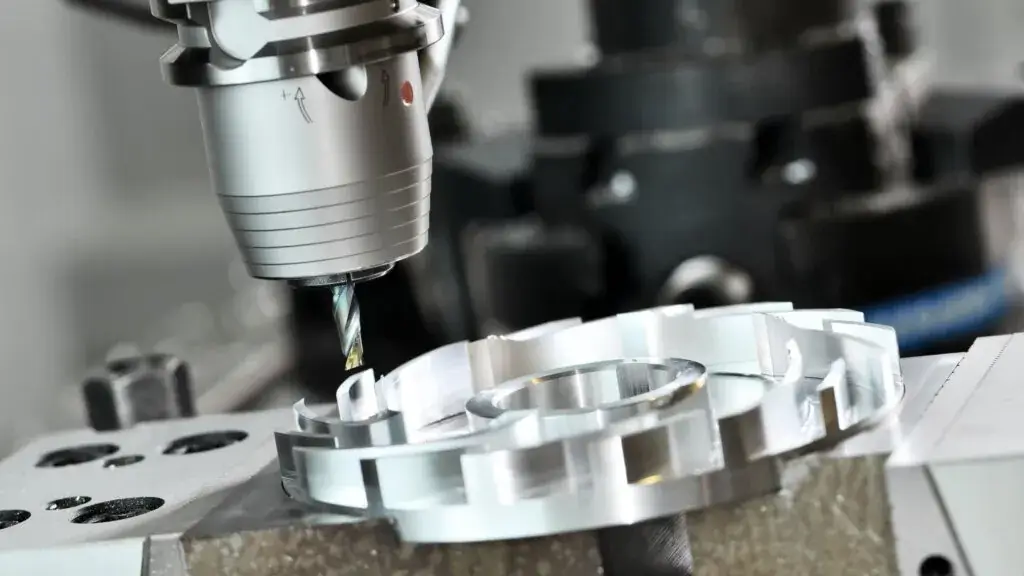
6.Which industries use CNC machining metal?
CNC machining metal has become an integral part of many industries due to its ability to efficiently produce precise and complex parts. The technology supports a wide range of applications, supporting industries that require high precision and high reliability.
1) Aerospace Industry
Rely on CNC machining to manufacture parts that must withstand extreme conditions and have high precision requirements. Common applications include engine mounts, control panels, and fuselage structures.
2) Automotive Industry
Use CNC machining for prototyping and production. Typically produces parts such as engine components, transmissions, and suspension systems.
3) Medical Industry
CNC machining is essential for manufacturing high-precision and sterile medical devices such as implants, surgical instruments, and orthotics.
4) Defense and Military
Relies on CNC machining to manufacture strong and durable parts such as housings, electronic components, and other critical hardware.
5) Electronics and Semiconductors
Uses CNC machining to produce precise and complex components such as connectors, heat sinks, and housings.
6) Energy Sector
Uses CNC machining to produce parts for solar panels, turbines, and other power generation equipment.
7) Industrial and Heavy Machinery
Relies on CNC machining to manufacture parts that require robustness and precision, such as gears, fasteners, and hydraulic components.
8) Marine Industry
Utilizes CNC machining to machine parts such as propellers, shafts, and ship fittings.
9) Tool and Die Manufacturing
Heavily relies on CNC machining to create precise molds.
10) Jewelry and Art
CNC machining helps create intricate designs and patterns on metals and other materials.
11) Prototyping and R&D
CNC machining is invaluable for developing prototypes that help test and improve product designs.
7.Why is CNC machining the preferred choice for metalworking?
CNC (computer numerical control) machining is increasingly favored in metal manufacturing due to its unparalleled precision, efficiency, and flexibility compared to traditional machining methods.
Here are 5 essential benefits of CNC machining in the metal manufacturing industry.
1) Improved Precision
CNC machines can operate to within fractions of a millimeter, ensuring that parts are consistently produced to exact specifications. This level of precision is critical for applications such as aerospace and medical devices where even the slightest deviation can result in product failure.
2) Faster Speed
Once design parameters are set, CNC machines can produce parts quickly and continuously without manual adjustments. This rapid production capability significantly reduces lead times and increases productivity.
3) Improved Efficiency
CNC machining minimizes waste by precisely cutting materials. The ability to program the machine for the optimal cutting path and sequence ensures efficient use of materials and time, saving costs in a mass production environment.
4) Complex Design Production
CNC technology enables complex designs that would be impossible or too costly to achieve with manual processes. Advanced CNC machines can handle complex cuts and fine geometries, expanding the design possibilities for metal manufacturing.
5) Versatility
CNC machines can process a wide range of materials, from soft metals like aluminum to hard materials like stainless steel and titanium. This versatility makes CNC machining suitable for a variety of industries, including the automotive, aerospace, and electronics industries.
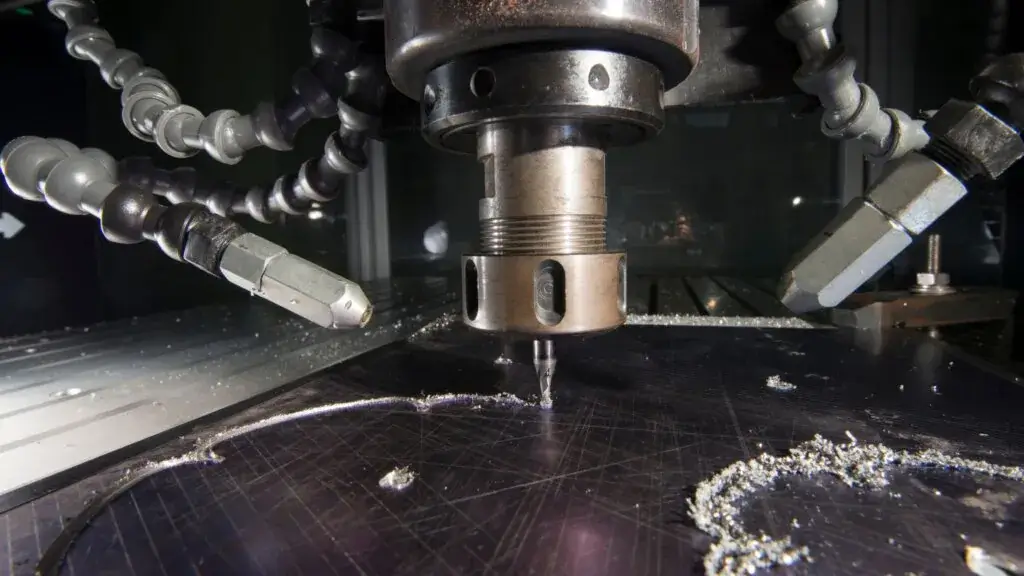
8.Is CNC machining metal expensive?
There are certain costs involved in CNC machining metal, and these costs can vary greatly depending on a number of factors. Understanding these factors can help in planning and budgeting projects involving CNC machining.
1) Machine Investment
Because CNC machines are technologically advanced, their initial cost is higher than traditional machines. However, over time, increased productivity and reduced labor costs can justify the investment.
2) Material Cost
The type of material being machined has a significant impact on the cost. Metals such as titanium are more expensive than aluminum, affecting the overall production cost.
3) Design Complexity
More complex designs require more complex programming and longer machine operation time, which can increase costs. However, the ability to produce complex parts can often reduce multiple manufacturing steps, justifying the expense.
4) Production Volume
Higher production volumes can reduce the high setup costs of CNC machining, making the unit cost more economical. For small batches, the cost per piece may be higher, but CNC machining offers advantages in speed and precision, which are often critical.
5) Tooling and Maintenance
Regular maintenance and tooling costs can also increase total expenses. CNC machines require specific cutting tools that can wear and need to be replaced, increasing operating costs.
6) Labor Costs
While CNC machines reduce the need for manual labor, operating these complex machines requires skilled technicians, which can be a significant expense, depending on the level of expertise required.
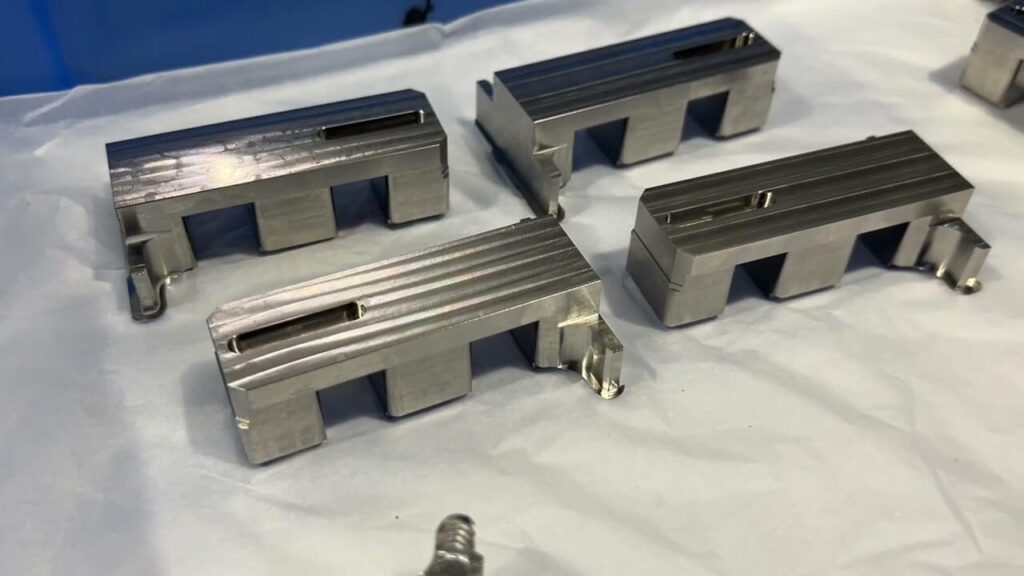
9.How long does it typically take to CNC machine metal?
Typically, the average timeframe for a CNC machined metal project ranges from a few hours for simple parts to days or even weeks for complex parts involving multiple production stages. Six factors that influence the timeframe are:
1) Design Complexity
More complex designs require longer machining times. Complex geometries may require lower speeds to achieve high accuracy, which can affect the overall duration.
2) Material Type
Harder materials such as stainless steel or titanium require longer machining times than softer materials such as aluminum because they require lower speeds to cut effectively and prevent tool wear.
3) Production Volume
Larger production quantities will generally increase the time for the entire project, but may reduce the time per unit due to economies of scale in setup and operation.
4) Tool Changes and Setups
Projects that require multiple tool changes or adjustments to specific setups may extend machining time.
5) Finishing Requirements
Additional processes such as polishing, anodizing, or coating will increase the total time from start to finish.
6) Machine Capabilities
Advanced machines with higher speeds and automation can significantly reduce machining time compared to older or less advanced equipment.
10.What are the common challenges and solutions in CNC machining metals?
CNC machining metals involves a variety of challenges that can affect production quality and efficiency. Proactively addressing these issues is essential to maintaining high standards in CNC operations.
1) Overcoming challenges presented by specific materials
Each metal has its own specific machining challenges that you should be aware of.
- Stainless steel (overheating): Overheating can lead to work hardening and poor surface finish. Use proper coolant flow, optimize cutting speeds, and use tools with higher heat resistance.
- Titanium (tool wear): The toughness and chemical reactivity of titanium cause rapid tool wear. Use carbide or diamond-coated tools and adjust cutting parameters to reduce stress on the tool.
- Aluminum (material sticking): Aluminum can stick to cutting tools, causing blockages and poor machining results. Use proper lubricants and use polished grooves to minimize material sticking.
- Copper (burr formation): The softness of copper can lead to burr formation, affecting part accuracy. Use sharp cutting tools and fine-tune feed rates to minimize burr formation.
- Brass (surface scratches): Brass is soft and prone to surface scratches during machining. Ensure a clean working environment and sharp tools; consider using a protective film during machining.
- Hardened steel (high tool stress): Due to the high hardness of the material, the cutting forces and stresses on the tool are high. Choose slower cutting speeds, higher feed rates, and sturdy carbide tools to distribute the cutting load more effectively.
2) Quality Control
Maintaining high quality standards and control in CNC machining requires addressing various challenges that may arise during the machining process. Effective quality control measures are essential to ensure that the final product meets the required specifications and is free of defects.
- Vibration (chatter): Machine vibrations can cause poor surface finish and dimensional inaccuracies. Ensure that the machine is properly maintained, use sharp tools, and optimize machining parameters to minimize vibration.
- Material inconsistency: Variations in material properties can affect machining behavior and quality. Use high-quality, consistent sources of material and perform material inspections before machining.
- Programming errors: Programming errors in CNC machines can result in incorrect cuts or part geometry. Leverage advanced CAM software with simulation capabilities to detect potential errors before actual machining.
11.What are the important design considerations for CNC machining metal?
For CNC machining metal, the design phase is critical to ensure the manufacturability of the part without incurring unnecessary cost or waste.
1) Here are some practical tips that highlight key design aspects that can affect the efficiency of CNC operations:
- Hole size: Ensure that the hole diameter is a standard size to avoid the need for custom tooling, which increases production cost and time.
- Grooves and grooves: Design grooves that are wider than the cutting tool diameter to prevent excessive tool wear and breakage.
- Unsupported areas: Minimize the design of thin walls and unsupported areas to enhance the strength and stability of the part during machining and reduce the risk of material deformation or breakage.
2) Design with a focus on cost-effectiveness and efficiency:
- Material selection: Choose the material that is most suitable not only for the part application but also for the machining process, balancing cost and machinability.
- Simplify geometry: Simplify the design as much as possible to reduce machining time and complexity, which directly reduces manufacturing costs.
- Integrated features: Integrate multiple features into a single part when feasible to reduce the need for additional components and assembly operations.
- Tool access: Ensure that the design allows easy access to standard CNC tools to avoid the need for specialized or custom tools.
- Modular design: Design parts to be modular whenever possible to facilitate replacement or upgrades, which is more cost-effective for the end user.
12.CNC machining vs. other metalworking technologies
1) CNC machining vs. traditional machining
- Accuracy: CNC machining has higher accuracy and repeatability than traditional methods such as manual machining.
- Speed: Automated CNC machines can produce parts faster once they are programmed, especially for complex or high-volume work.
- Flexibility: CNC machines can quickly switch between different setups, making them ideal for customization and low-volume production.
- Cost: Initially costs are higher due to setup and programming, but in the long run, it is cost-effective for complex and repetitive work.
- Material waste: CNC machining is generally more material-efficient because advanced software can optimize cutting paths to minimize waste.
2) CNC machining vs. additive manufacturing (3D printing)
- Material strength: CNC parts are generally stronger and more durable because they are made from a solid block of material.
- Material variety: CNC machining can handle a wider variety of metals, which is often challenging for 3D printing.
- Surface finish: CNC machining can provide a superior surface finish and tighter tolerances than 3D printing.
- Mass production speed: CNC machining is generally faster and more cost-effective for high-volume production.
- Complexity cost: Although CNC machining can be costly for highly complex parts due to tooling requirements, the cost of 3D printing does not increase with increasing complexity.
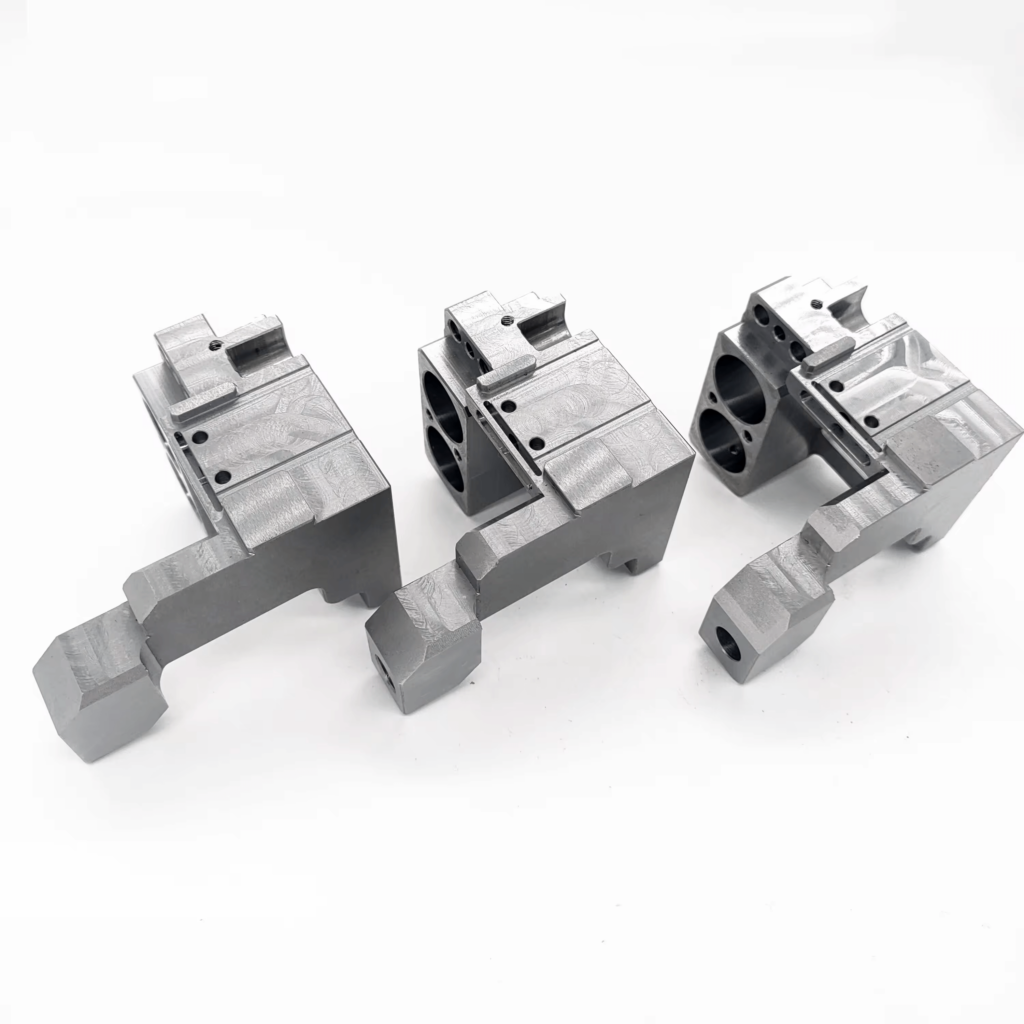
13.How to choose a CNC machining metal supplier?
Selecting the right CNC machining supplier is critical to achieving the quality and efficiency you need for your metal machining project. Here are some valuable tips to guide you through the vetting process:
1) Equipment and technology
Make sure the supplier uses the latest technology and machines and can handle the complexity of the project. Facilities equipped with advanced machinery, such as HAAS CNC mills and lathes, indicate the ability to deliver precise results.
2) Experience and expertise
Look for suppliers with a proven track record. Experienced engineers who have handled a variety of projects can provide insights and solutions for your specific needs.
3) Quality Control Measures
Quality assurance is non-negotiable. Check that the supplier follows strict quality control procedures throughout the production process. This includes incoming material inspection, in-process inspections, and final testing to ensure that each part meets strict standards.
4) Certifications and Standards
Verify that the provider adheres to industry standards and holds relevant certifications to demonstrate its commitment to quality and consistency.
5) Delivery and flexibility
Consider their ability to meet your timeline. When time is tight, suppliers that offer fast turnaround times (such as delivery within a few days for urgent projects) can be invaluable.
6) Customer Service and Communication
Effective communication is key. Choose a supplier that is responsive and transparent in communication, and ensure that you are kept up to date throughout the manufacturing process.
7) Scalability
Evaluating whether a provider can scale operations up or down based on your project needs is critical to handling peak loads or scaling up production as needed.
14.Conclusion
The future of CNC machining in the metalworking industry will continue to evolve as technology advances. As the industry evolves, a focus on incorporating innovative technologies and maintaining high standards of quality assurance will increasingly become the benchmark for leading suppliers that stand out in this competitive market.
By adhering to these guidelines and selecting a supplier equipped with the appropriate tools and expertise, companies can ensure that their CNC machining needs are met with the highest standards of excellence and efficiency.
